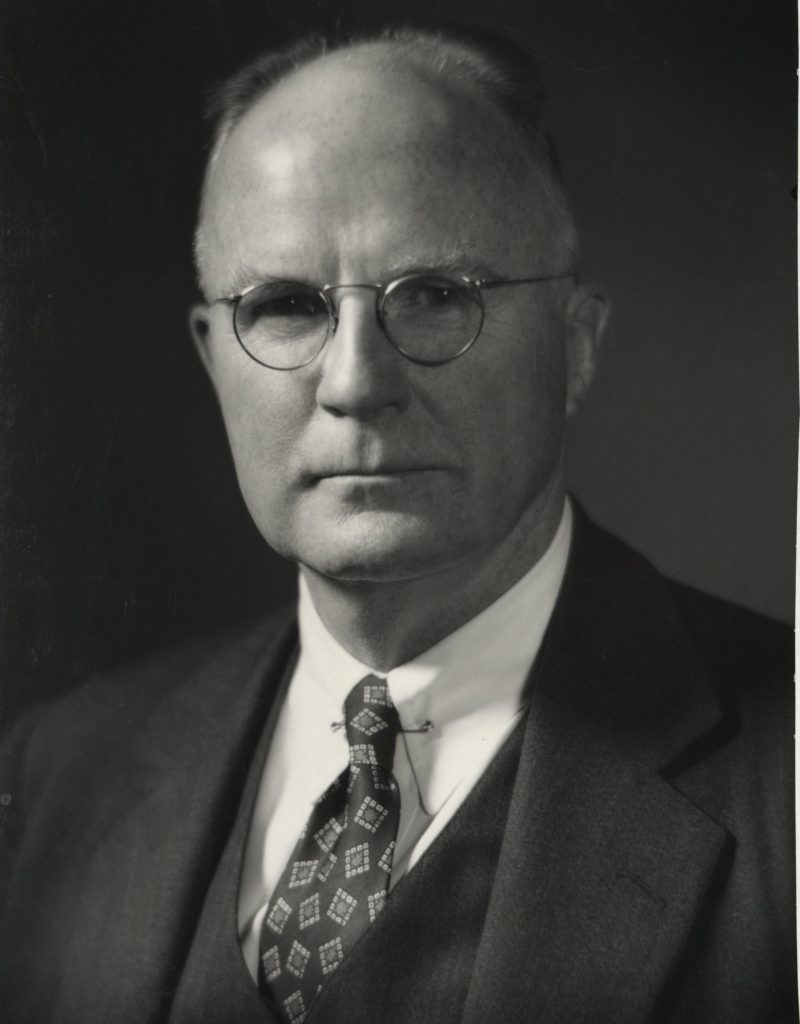The Roosevelt Hospital and its Connection to the Berry Plan.

Dr. Frank B. Berry, pictured above, was born in Dorchester, Mass., in 1892. He attended Harvard College (Class of 1914) and Harvard Medical School, graduating in 1917. His medical training was interrupted by World War I, in which he served as an Army pathologist with the American Expeditionary Forces in France.
When he returned home, he interned at Peter Bent Brigham Hospital and at Boston City Hospital, initially completing a residency in pathology. However, Berry developed an interest in surgery during the war. He chose to take an internship at Presbyterian Hospital (NYC), and a surgical residency at Bellevue Hospital (NYC), where he continued to practice as the director of its first Surgical and Chest Surgical Division under Columbia University’s College of Physicians and Surgeons section.
In 1936, Dr. Berry was appointed to Roosevelt Hospital as an Associate Attending Surgeon in thoracic surgery. At the start of World War II, Roosevelt Hospital was asked to form the Ninth Evacuation Hospital with hospital staff, and Berry was appointed Chief of Surgery of the unit. The “Ninth Evac” was one of the earliest units ashore in the North African landing and the unit was far forward during the Tunisian campaign. The unit traveled extensively through Northern Africa, Sicily, Italy, France, and Germany before returning home.
Dr. Berry also served as consultant in surgery at Allied Forces Headquarters. In 1944, he accompanied the Seventh Army during its invasion of Southern France and through the campaign to Augsburg, Germany. At the end of the war, Berry accepted the post of Deputy Chief of Public Health and Welfare of the Allied Control Commission in Germany, tasked with reopening German medical schools.
He resigned as Associate Attending Surgeon (thoracic) at Roosevelt Hospital in 1946, and was appointed Visiting Consultant in general surgery (thoracic). He remained in the Army Reserves, becoming a brigadier general in 1949 and played a prominent part in furthering the reserve program in New York City’s Military District.
Berry began to experience tremors in his hands in the early 1950s, and decided it was prudent to move on from surgery. Between 1954 and 1961, he held the position of Assistant Secretary of Defense focusing on health and medical affairs. During this time, he developed what came to be known as the Berry Plan. The plan allowed medical students to avoid being “called up” arbitrarily, say in the middle of their schooling or in-hospital training, throwing a wrench into school enrollment plans, hospital staffing plans, and the education of many medical students. Applicants could request one of three schemes: to complete an internship year and then go in the service, to complete one year of residency then go into the service, or serve after completing full residency training. Each of these choices would then involve two years of active duty military service, and in some cases, additional reserve service years. Doctors didn’t always get the option they applied for, but they were able to complete some part of their training without interruption and were guaranteed a spot to continue where they left off once they returned from service; 42,000 physicians and surgeons took advantage of the Berry Plan, including many of our own MSHS physicians and surgeons.
Writing about Dr. Berry as a person, a former resident at Roosevelt Hospital, Edward G. Stanley-Brown says that he devoted enormous amounts of time and energy in teaching each one of the trainees. He took a personal interest in their lives, often acknowledging personal and professional events and successes with a note or phone call. His door was always open to his house staff. He was happy to assist a new intern with a simple procedure or work with a senior resident on the most complicated one. He could be stern and demanding in surgery, requiring residents to be courteous, pleasant and to arrive at the OR on time, or be dismissed for that session, but his reprimands were firm, fair and carried out in private. Stanley-Brown remembers him fondly as “a superb surgeon, a brilliant teacher … a true friend, and quite simply our beloved chief.”
Frank Berry died on October 14, 1976 at the age of eighty-four. His funeral took place in St. Bartholomew’s Church four days later. Stanley-Brown notes that it must have been a bad day to need a surgeon in NYC, because the church was full of them. Surgeons from Bellevue, Roosevelt, St. Luke’s, Presbyterian Hospitals and other sites, including every one of his intern group, came to honor the man who made such a difference in the education and lives of thousands of physicians and surgeons across the country.
Written by Michala Biondi, Associate Archivist
Sources:
Stanley-Brown, Edward G. “Frank Brown Berry, 1892-1976,” Bulletin of the New York Academy of Medicine, Vol. 54, #5, May 1978, pp. 532-538.
Berry, Frank B. “The Story of ‘The Berry Plan.’“ Bulletin of the New York Academy of Medicine, Vol. 52, #3, Mar/April 1976, pp. 278-282.
Clark, Alfred E. “Frank B. Berry, Chief of Defense Doctors,” New York Times, October 16, 1976
Greene, Frederick L. “Remembering the Berry Plan.” General Surgery News, May 15, 2020
Wikipedia, “The Berry Plan.” https://en.wikipedia.org/wiki/Berry_Plan retrieved March 1, 2023
